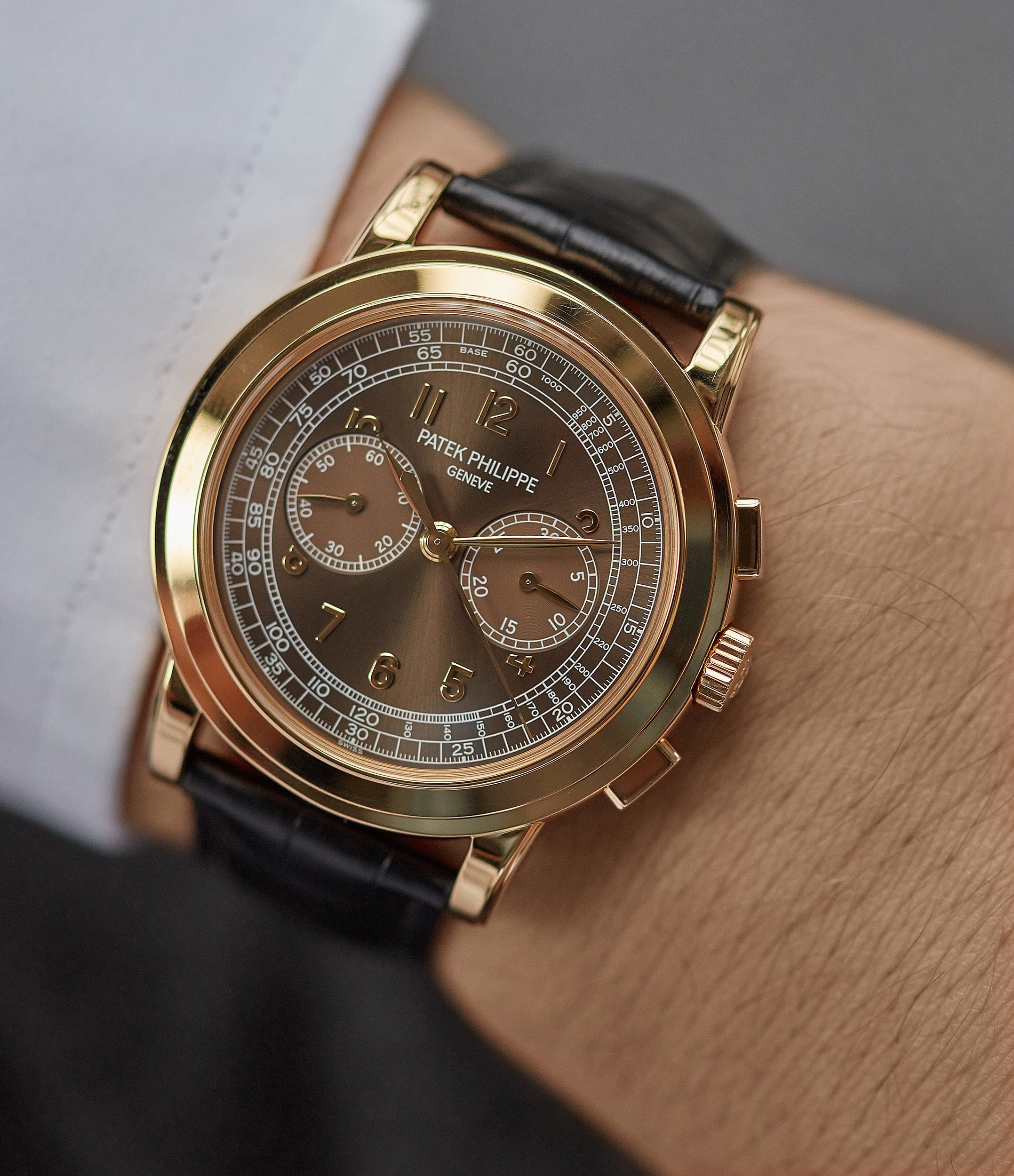

Complementing the height achieved by the applied numerals are sunken bi-compax sub-registers tracking the running seconds and the elapsed chronograph minutes, once more both featuring railroad tracks. Proportionally large in size carrying distinctive visual weight, the raised numerals play a considerable role in the desirability of this example. Taking one step further into the dial reveals arguably the most charming feature of this 130 - its solid gold Breguet numerals. The surround of the dial features a tachymeter scale which is cleverly integrated with the railroad seconds track, seamlessly benefiting function and clarity on offer. There is a lot to adore on this 130, as its vertically brushed silver dial demonstrates.

Its exterior is tastefully restrained with soft curvaceous lines in a polished finish, complete with a small stepped bezel surrounding the dial aperture producing subtle depth and ensuring the eye firmly is attracted to its sophisticated dial. Measuring a compact 33 mm in width, its 18-carat yellow gold case may sound small, however, thanks to its long lugs, the piece is comparable to a 36mm watch on the wrist. As with most vintage Patek Philippe, small nuances can significantly impact the desirability of specific references, with the example here offering charisma in abundance.ĭating from 1943, this Patek Philippe 130 is a quintessential example of the important reference fitted with an original dial featuring gold Breguet numerals. Today, surviving examples can be found fitted with various dials, including ones featuring Roman numerals, Arabic numerals, sector dials, two-tone pieces, and Breguet numerals. It's estimated that as little as 1,500 examples were produced. The 130 enjoyed approximately 30 years of production.


Classically proportioned with an overriding sense of elegance, the 130 was predominantly produced in precious metals, yellow, pink, and white gold, with a minimal amount produced in stainless steel. Launched two years after the dress watch defining 96 Calatrava and under the Stern family's management, the 130 chronograph showed a close resemblance and approach to design as the 96 but in a bi-compax chronograph configuration. To meet this demand, in the 1930s, Patek Philippe announced a brand new reference which, despite earlier examples that were created in limited numbers, was their first serially produced chronograph watch. No matter the watch Patek Philippe turns its hand to, excellence follows.ĭuring the 1920s, the interest and demand for chronographs was growing exponentially. Due to a combination of the aforementioned as well as low production numbers on specific references, a plethora of highly collectable and exceedingly rare watches often dominate auction room headlines. The brand has consistently had an eye for traditional, sophisticated, and mechanically mind-blowing creations. It is widely regarded that Patek Philippe has occupied the top of the horological tree for centuries, always priding itself on producing some of the greatest watches the world has ever seen.


 0 kommentar(er)
0 kommentar(er)
